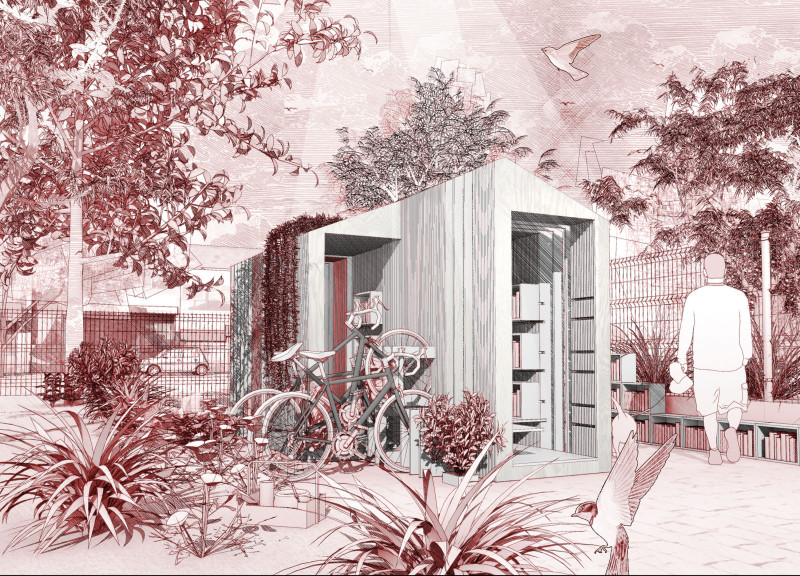5 key facts about this project
The design is located in an urban area where digital technologies have significantly impacted traditional reading habits. It seeks to create a space that encourages community interaction with physical books. By drawing on the concept of "Tsundoku," the project highlights the ongoing relevance of literature while addressing current challenges from the digital world.
Modular Framework
A system of modular panels forms the basis of the design. These panels allow for versatility in the layout and can be easily transported and assembled. This flexibility supports a variety of activities such as book exchanges and local events. The space can change according to the needs of the community, promoting a dynamic environment for users.
Community Interaction
Informational signage is incorporated into the overall layout. These signs not only help with navigation but also create a sense of connectivity among users. By inviting participation and encouraging exploration, the design fosters a lively atmosphere that supports the sharing of ideas and resources.
User-Centric Experience
Attention to user experience is evident in the overall design approach. The arrangement of the space engages the senses, particularly sight and sound. This thoughtful design helps to create a comfortable reading environment where visitors can focus and linger. The layout is crafted to encourage users to immerse themselves in books, enjoying the act of reading in a welcoming setting.
The project also includes areas dedicated to communal book exchanges. These spaces promote a culture of sharing and sustainability, making literature an essential part of daily life. By emphasizing interaction and community engagement, the design strengthens the bond between residents and their reading materials.






































